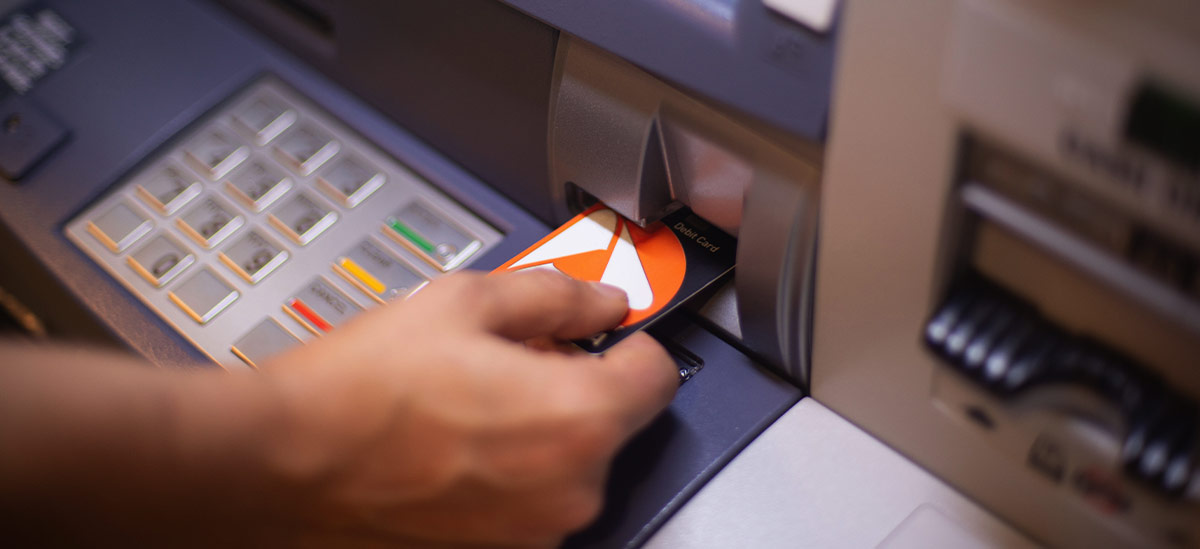
If you’ve received a paper check and found that getting to the bank during regular hours is an inconvenience, you may wonder whether you can use the automatic teller machine (ATM) to make your deposit.
In many cases, the answer is yes. It’s common for ATMs to accept both cash and check deposits, offering a convenient solution that’s available outside of banking hours.
The following guide explains exactly how to deposit a check in an ATM, how to access your funds, and more. When you’re done, you’ll have all the information you need to confidently make your deposit.
How To Deposit A Check Using An ATM
To successfully deposit a check into an ATM, you need to follow a few basic steps. Here’s a quick overview.
1. Locate An ATM
Start by checking with your bank for a list of in-network ATMs that accept deposits. You may be able to find this list in your bank’s mobile app or on the website. Using an ATM that’s in your bank’s network may allow you to avoid fees and could ensure faster access to your deposited funds.
Also, keep in mind that not all ATMs accept deposits. Some machines, particularly those in gas stations and retail stores, may only offer cash withdrawals. Look for a label or symbol that indicates the machine accepts withdrawals or check the machine for a deposit slot.
2. Prioritize Safety
When you’re using an ATM, a little bit of caution can go a long way. Be sure to choose an ATM in an area with sufficient lighting, especially during nighttime. This makes it easier to see your surroundings and spot any potential threats. Also, look for machines in high-traffic areas or frequently visited locations since the extra foot traffic and surveillance can add another layer of safety.
Keep your check somewhere safe until you’re ready to put it into the ATM, sign your check on the back for endorsement right before you’re ready to deposit it, and use your hand or body to shield the keyboard when you’re entering your PIN. This can help keep onlookers or hidden cameras from capturing your details.
3. Arrive Prepared
Making sure you have everything you need before you arrive at the ATM can help ensure a smooth process. You’ll need the following items:
- Bank debit card: For most ATMs, you won’t be able to make the deposit without your card. Be sure to bring it with you and make sure it has already been activated.
- Personal identification number (PIN): The code you’ll need to access your account. For security reasons, you should memorize this rather than write it down.
- Your check: Make sure the check is made payable to you or someone listed on your bank account and that it has been properly endorsed.
- Deposit envelope (if required): Some ATMs may still require you to place your check or cash in a bank-provided envelope. These are typically available at the ATM, and the machine should indicate whether you need one..
4. Deposit Your Check
The exact process for depositing your check may vary depending on the specific ATM. However, the steps are generally the same:
- Insert your card: Some machines require you to insert the ATM card and leave it in the machine. Others may ask for swift insertion and removal or require you to swipe the card. Some ATMs are now cardless, allowing you to use the financial institution’s app or a digital wallet to access your accounts. When you approach the ATM, check the screen for instructions.
- Enter your PIN: Securely type in your personal identification number, being sure to shield it to prevent unauthorized access.
- Select the transaction type: Once you’ve entered your PIN, the machine will ask you what you want to do. Choose the “deposit’ option.
- Select your account: If you have more than one account, the ATM should ask which account you want to deposit to. Choose the correct account.
- Enter the deposit amount: Some ATMs automatically read the amount of your check when you insert it. However, others may ask you to enter the check amount.
- Insert the check: Make sure you’ve signed your check on the back to endorse it, then place it in the deposit slot. Note that some machines require an envelope, while many modern machines do not. Check the screen for instructions. If you have several checks to deposit, be sure that the ATM you are using can accept multiple checks.
- Verify the amount: Check that the amount displayed on the screen matches the check’s value. The machine may ask you to verify the amount.
- Finalize your transaction: Answer any other questions that show up on the screen, and be sure to take your receipt. You may need it if there are any discrepancies.
- Retrieve your card: Before walking away, make sure you’ve taken your card, especially if the machine holds it during the transaction.
Accessing Your Deposits
After successfully depositing your check into an ATM, you’ll likely be wondering how and when you can access your cash. Many banks make check deposits available within two business days, and some may process them even faster. You may be able to opt for quicker funds availability for a small fee, such as with PNC Express Funds. However, if you use an ATM that’s not owned by your bank, there could be delays.
It’s also important to note that each bank may have a different cutoff time for processing transactions. If you make your deposit after the cutoff time, processing won’t start until the next business day. The ATM you use may have a different cutoff time, so make note of this as well.
Once the check has cleared and the funds are available, you can withdraw the full amount or use it to pay bills online, make debit card purchases, or cover checks written against the account.
Deposit Your Checks From Home
While many ATMs now offer a wide range of unexpected services, it’s worth noting that you may not need to visit one to deposit your check – even after banking hours. Instead, you may consider making the deposit using your smartphone and your bank’s mobile app.
Most banks allow you to snap a picture of a check and deposit it virtually, right from the comfort of your home or wherever you may be. It's a seamless process that not only saves time but also the effort of locating an ATM and making a physical trip.
Having the option to make deposits at your bank branch, at an ATM, or through mobile banking gives you the power to manage your money in the way that’s most convenient for you.
Your Banking, Your Way
To learn more about PNC Bank’s checking accounts and other services, contact us today. A member of our team is happy to help you explore your options.







